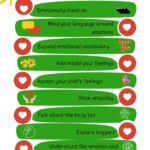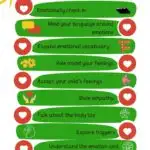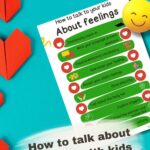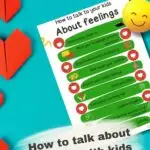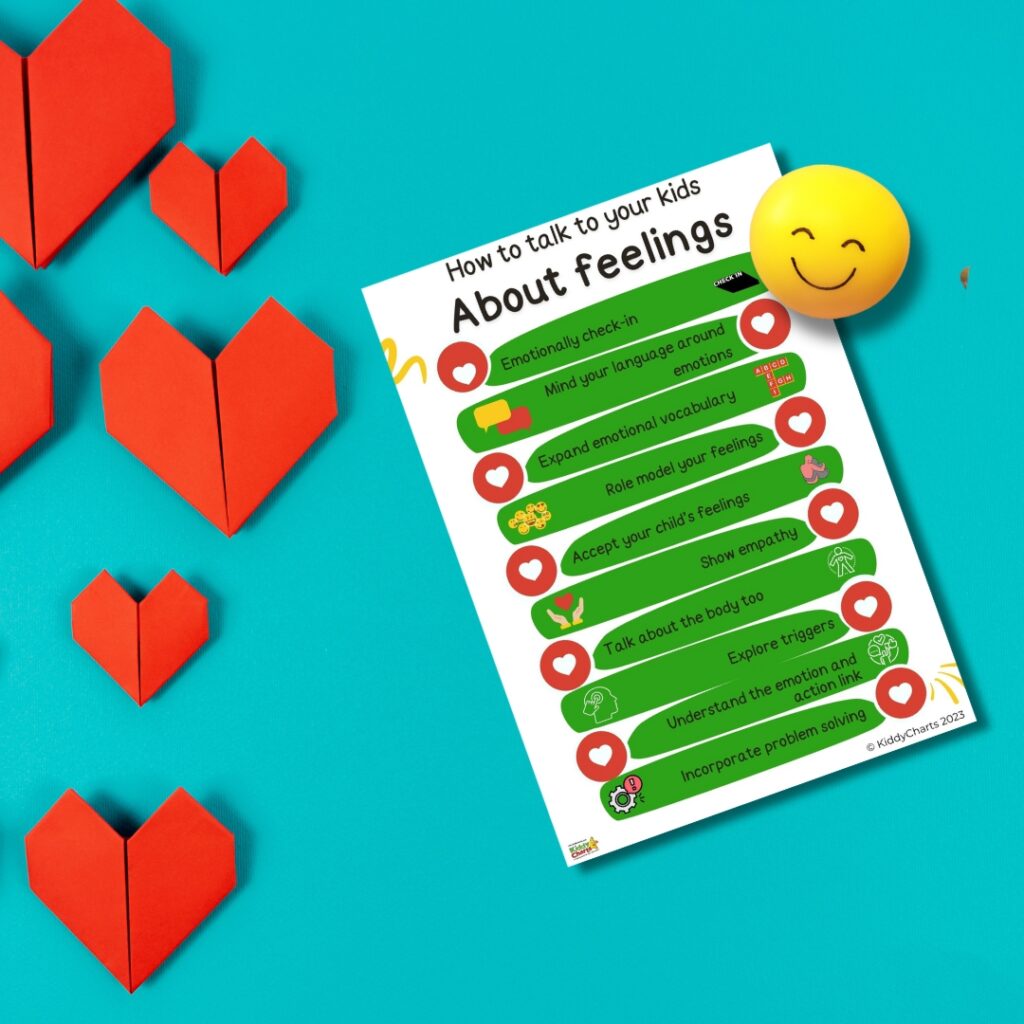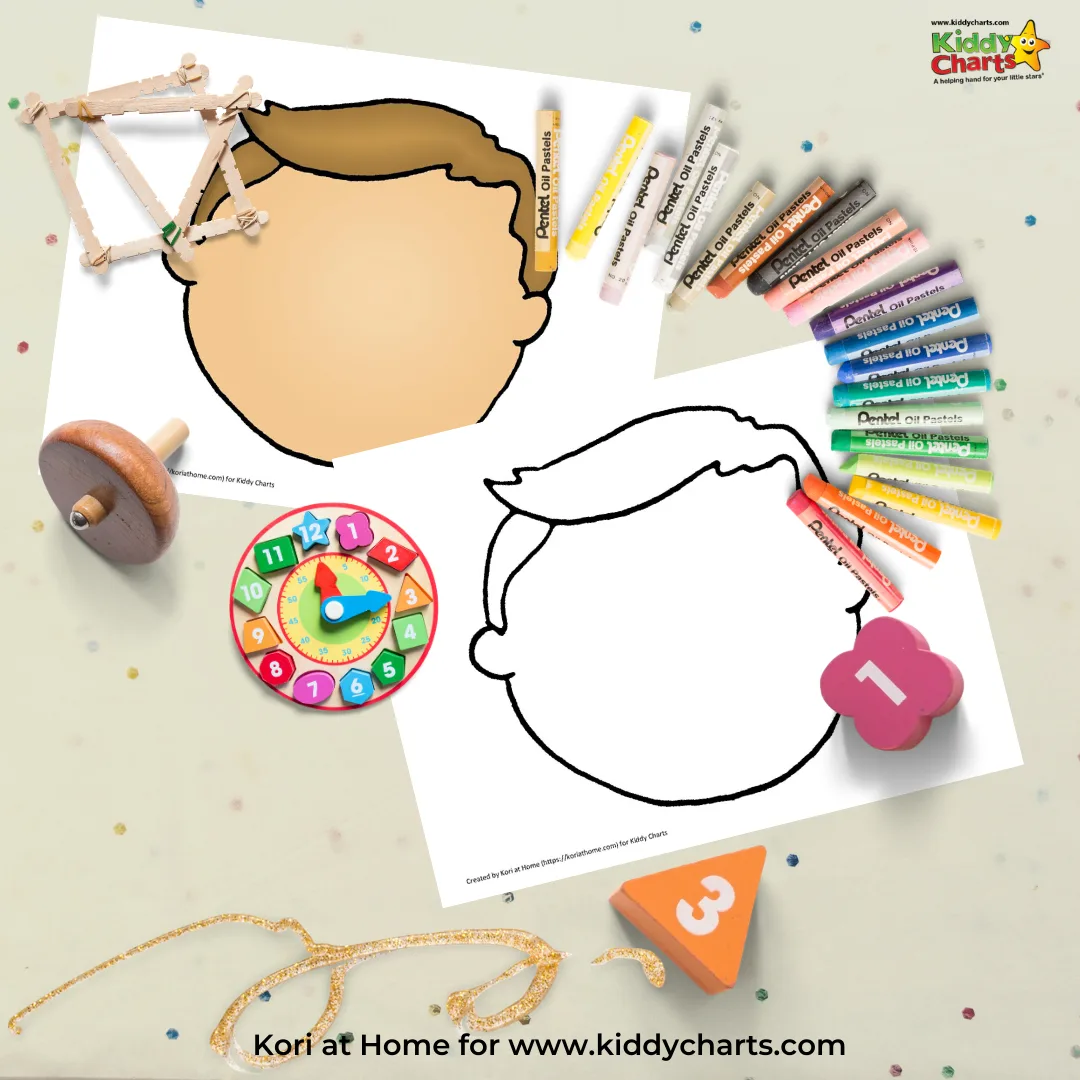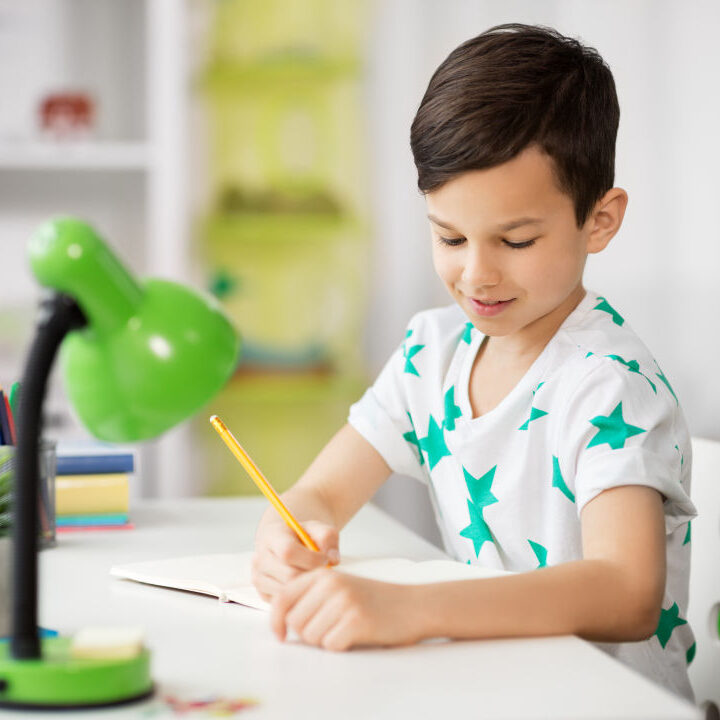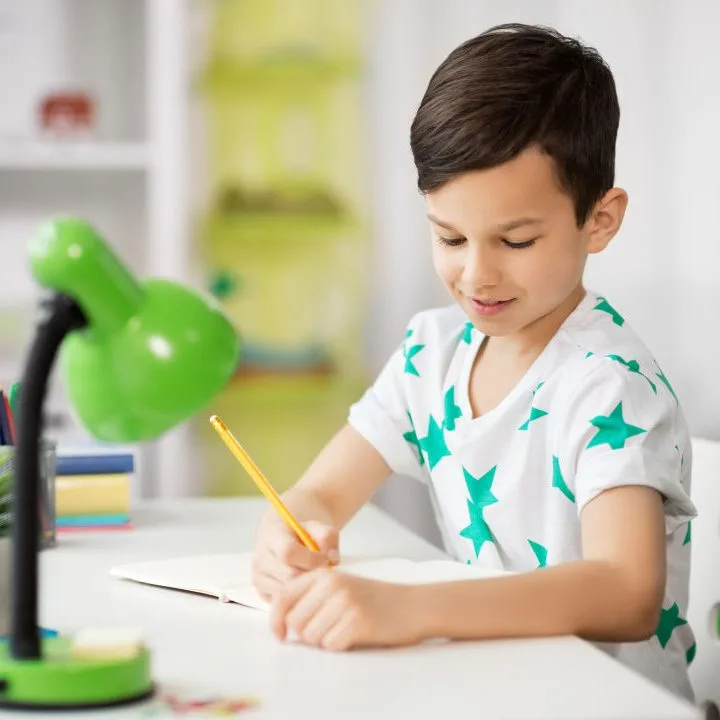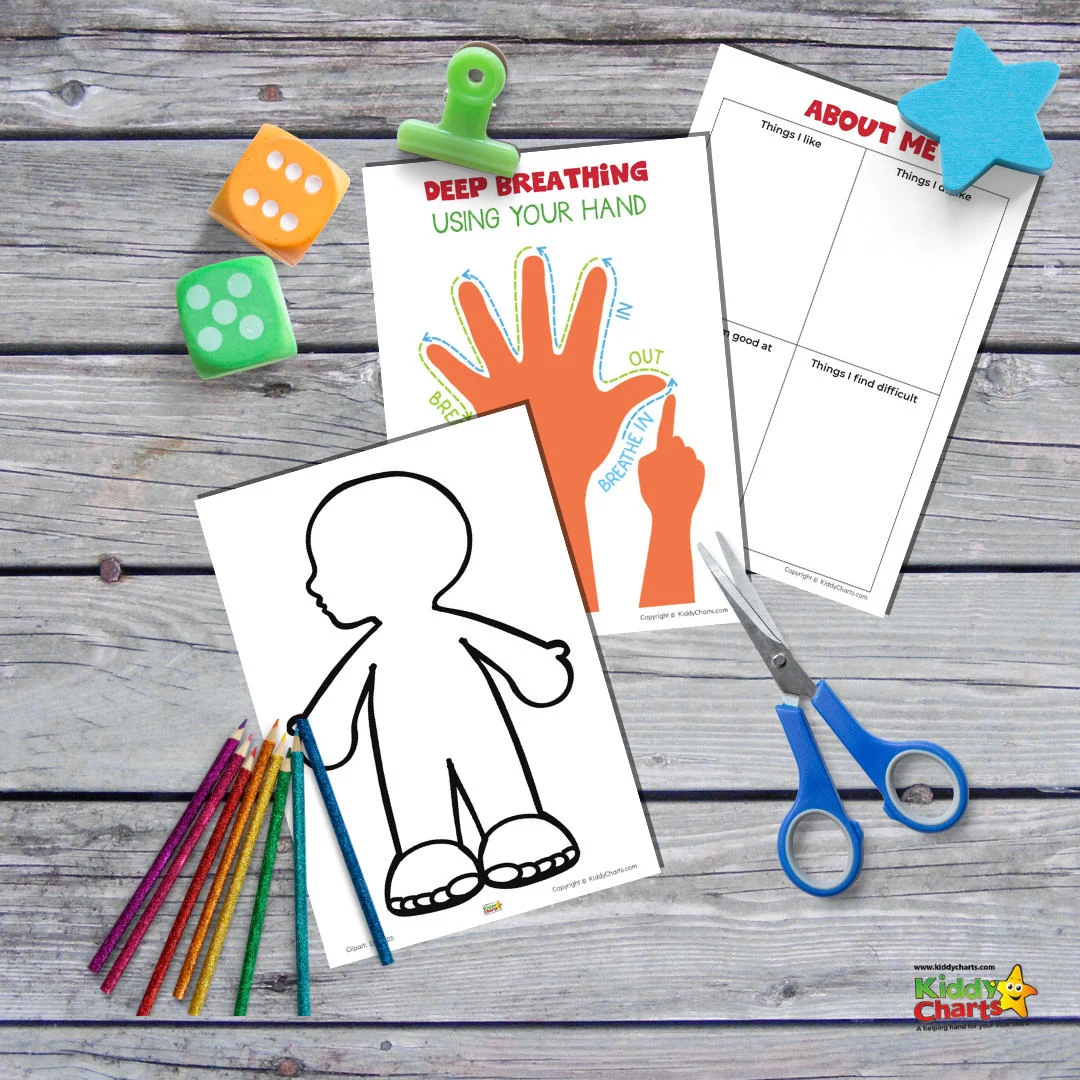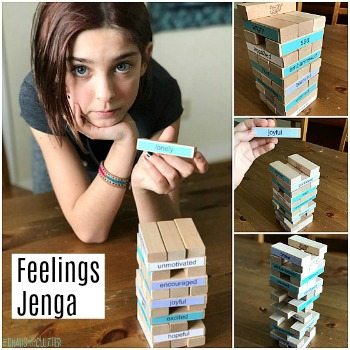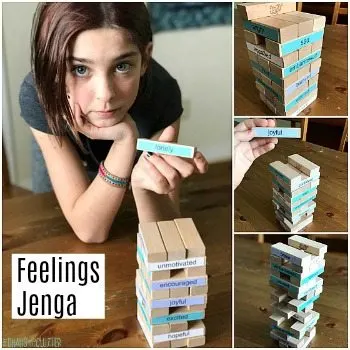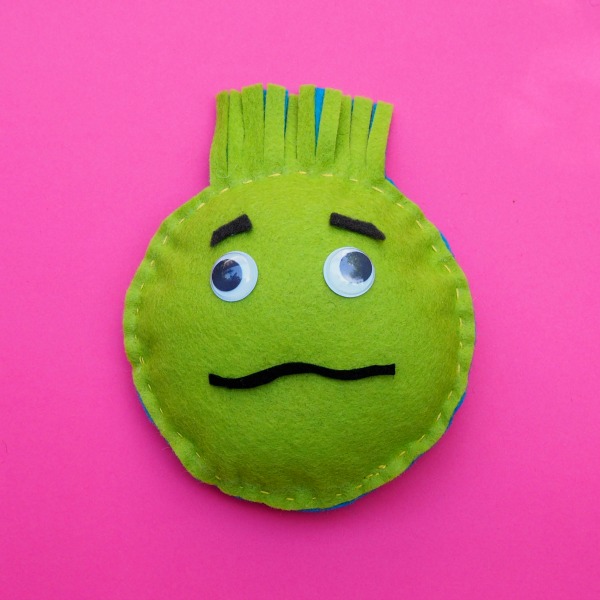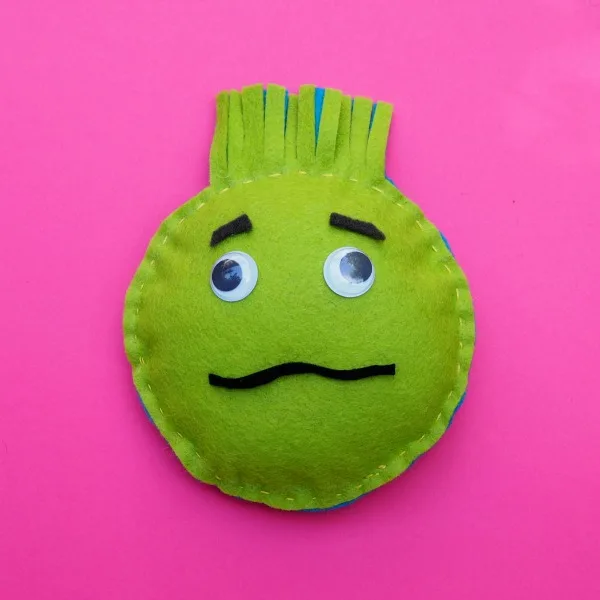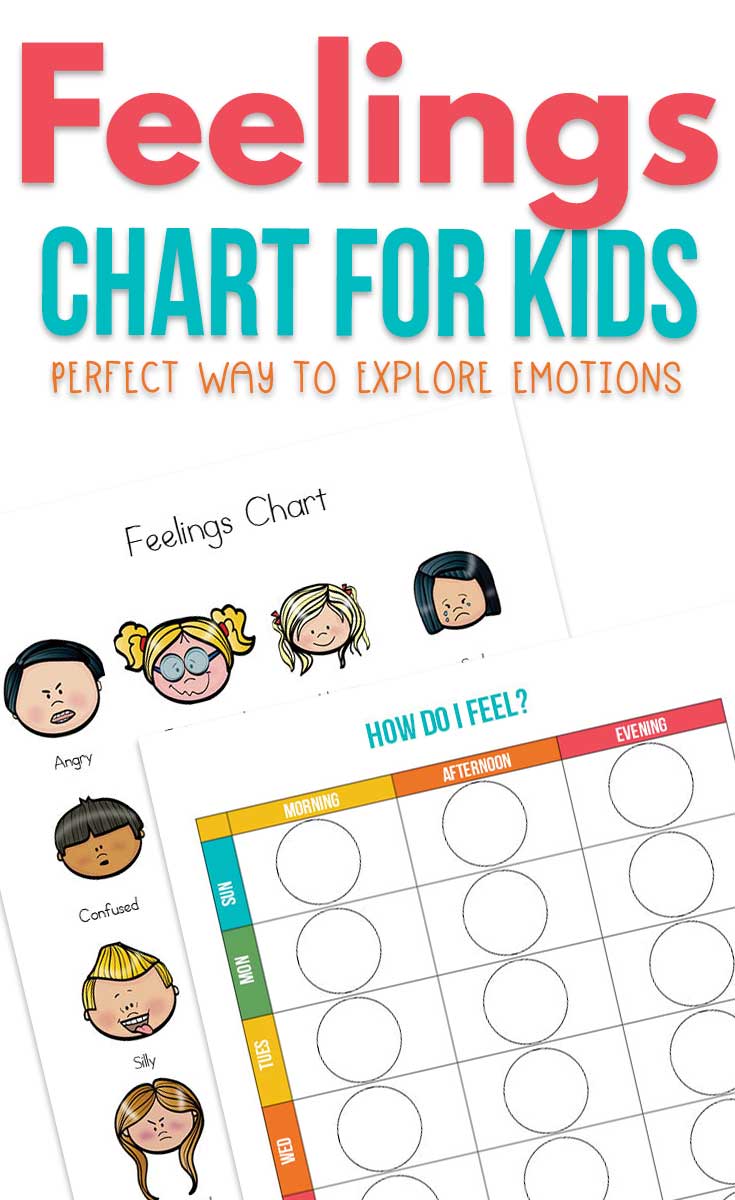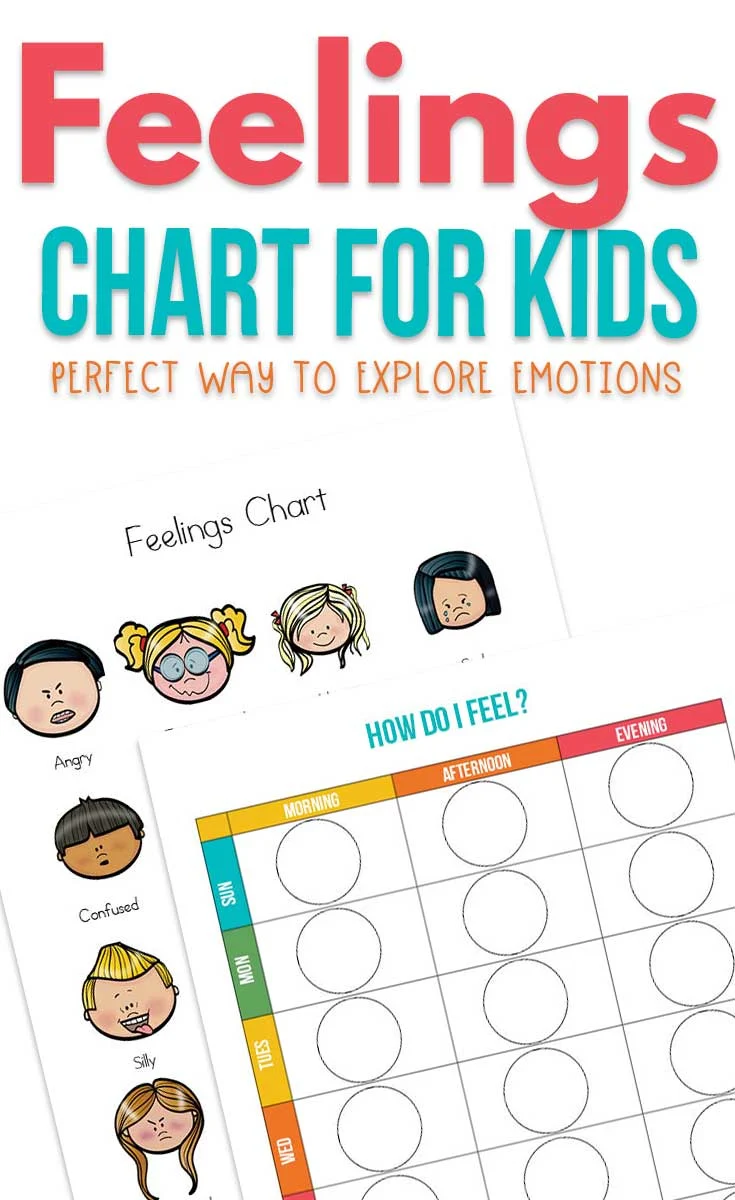This article is so important. How to talk to kids about feelings isn’t something that we are ever taught as parents. Strangely though, it is one of the hardest things that we have to do. It boggles my mind that we don’t have more support and help around something so critical to our, and our children’s wellbeing.
With this in mind, we have a guest article today from Molly Potter to give us advice on this very topic. It isn’t the complete answer, though it IS a wonderful place to start.
We have also included a checklist to download about this topic as well – so you can check in with yourself to see if you are doing these things with your kids.
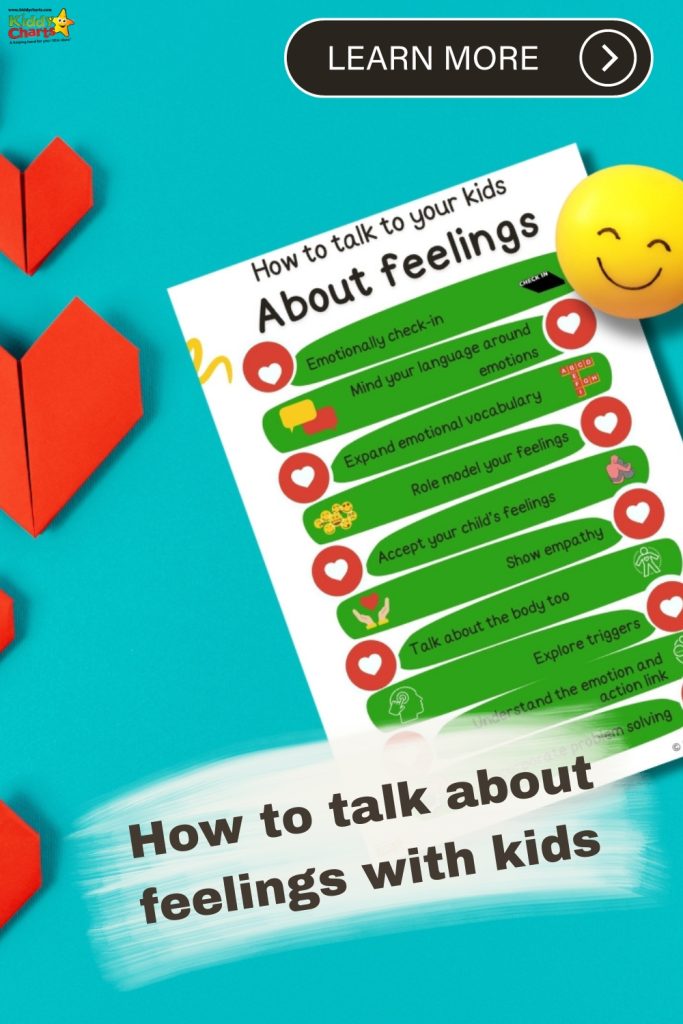

So, where do we start with this feelings malarky 😂
Put emotions on the agenda
In a world that prioritises rational thinking, emotions are often overlooked despite the fact they are a huge part of being human and can have powerful effects! Ignoring emotions does not make them go away. Talking about emotions with children helps to increase their awareness of them which in turn can start their journey towards managing them more effectively.
School home-time (for teachers) or bedtime at home (for parents/carers) is a great time to do an emotional review or ‘check-in’ of that day. You could use Molly’s books: How Are You Feeling Today?, How are You Feeling Now? and It’s OK to Cry to remind you to explore the emotions of each day.

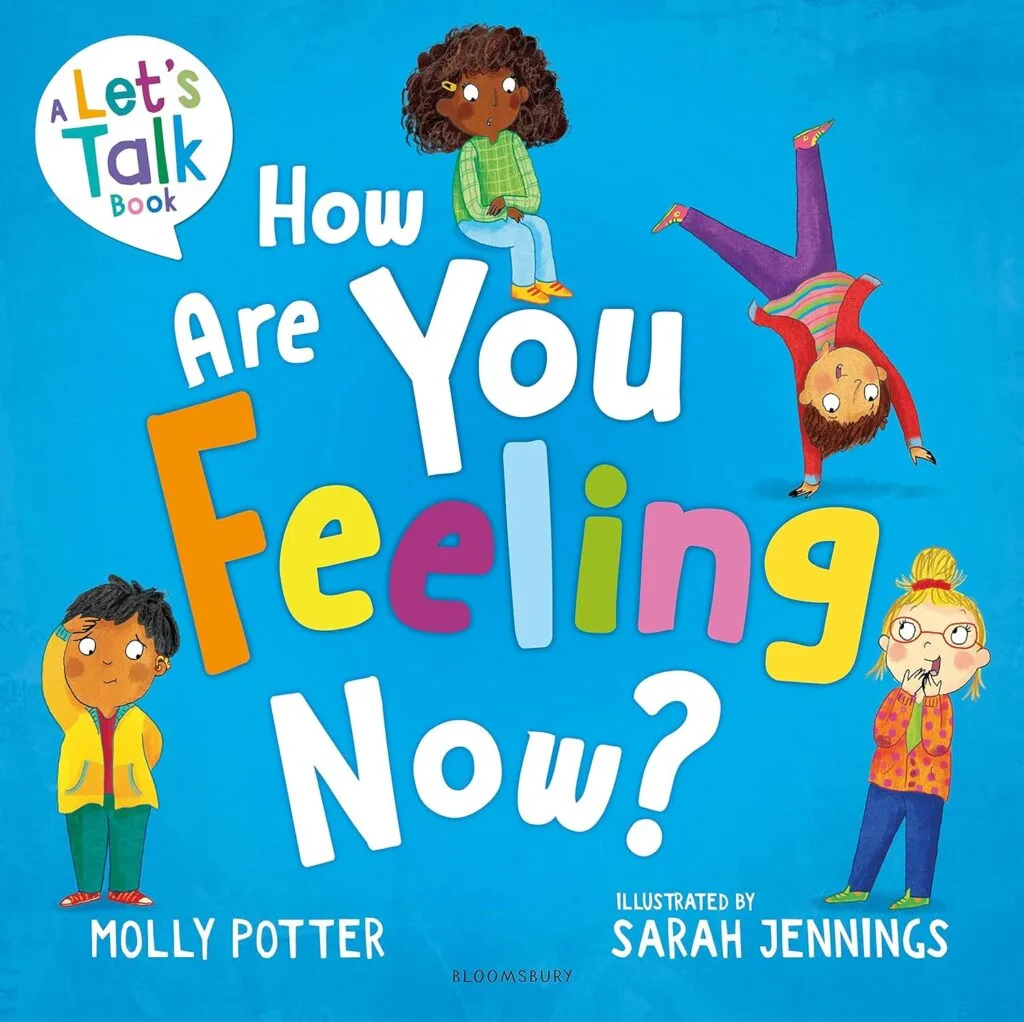


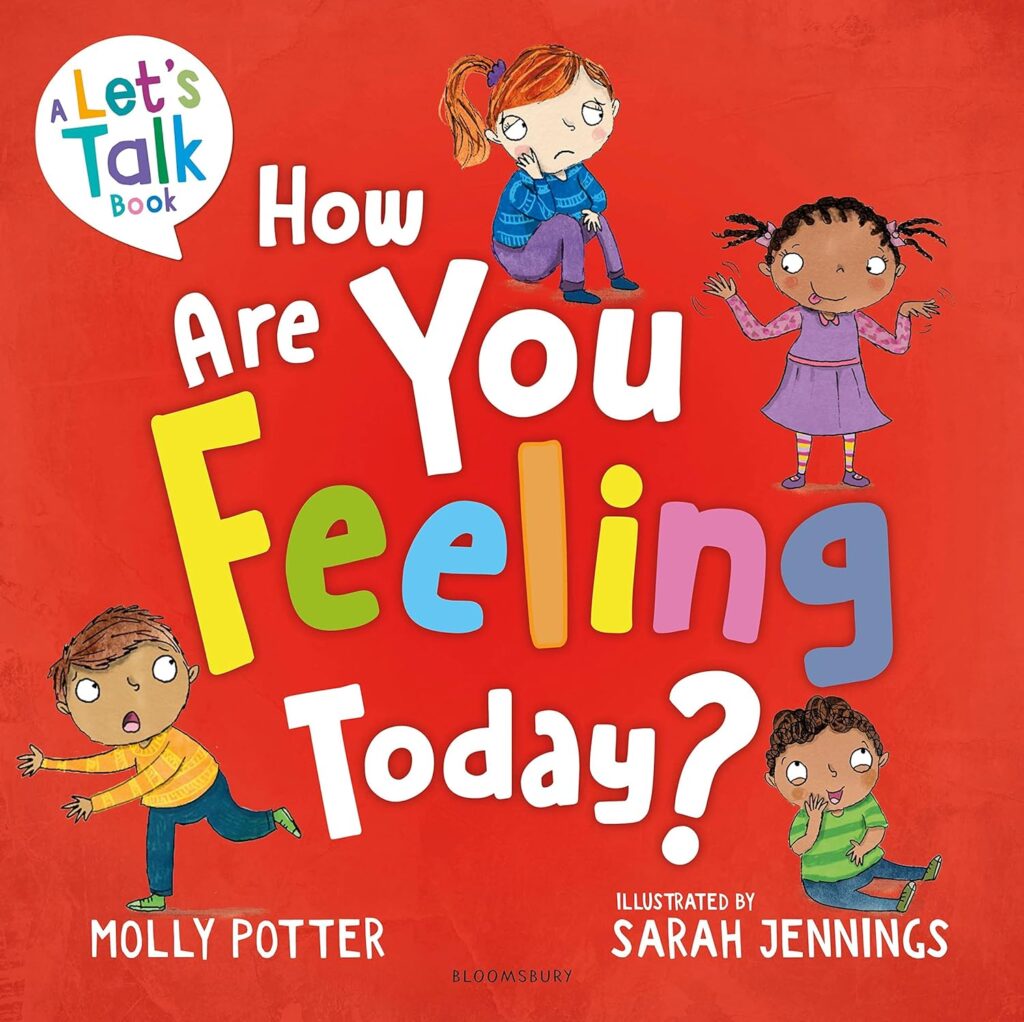
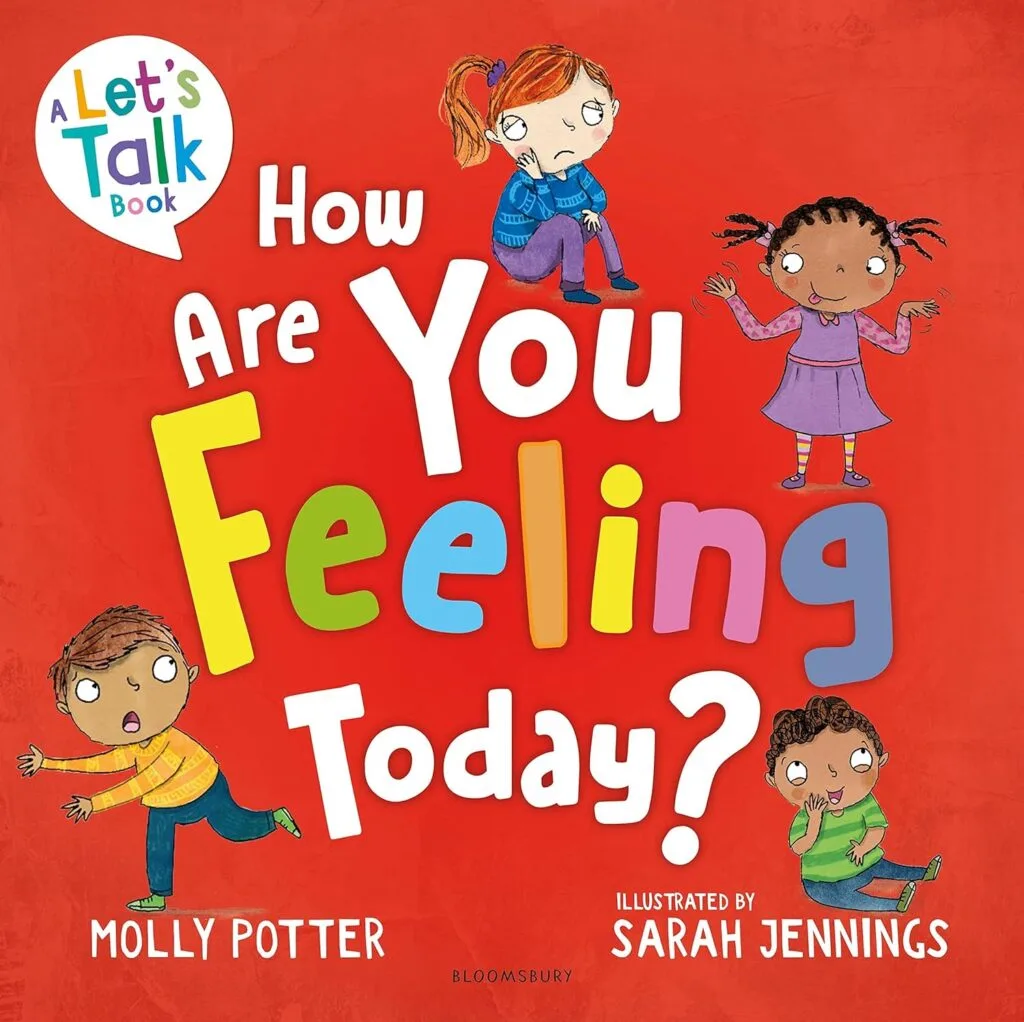
Posters displaying several different emotions on a wall, such as our feelings poster, can be used in a similar way. You could ask children to think of something that happened that day and how it made them feel or you could choose an emotion and ask children if they felt that particular emotion at any point.
Increasing children’s emotion vocabulary also helps them to discuss how they feel and become more aware of their emotions. Start very young children with happy and sad, then add scared and angry and then move on to further ways of feeling – of which there are many!


Another helpful way of putting emotions on the agenda is to regularly wonder out loud about what a child might be feeling. For example, ‘I wonder if you’re feeling disappointed because…’ Don’t worry if you get it wrong, the child will soon correct you!
React to your child’s emotions with acceptance
As emotions are a big part of who we are, you can help children feel even more cared about by accepting that all of their emotions are valid, showing that you tolerate what they are feeling and understanding that their feelings have real meaning for them. You can do this by using phrases like, ‘I understand that you feel angry, I would feel angry too’ or ‘I can see you are disappointed.’ Acknowledging children’s emotions like this can also go a long way to helping them feel better about any situation. It works with adults too!
It’s also beneficial to never refer to emotions as ‘good’ or ‘bad’. Use enjoyable and unenjoyable or comfortable and uncomfortable instead. The reason for this is that if a child receives the message that an emotion is bad, they won’t just experience the emotion, they will also feel some shame for feeling it. Likewise, if feeling happy is labelled as ‘good’, a child will feel ‘bad’ for not appearing to be happy all the time – which is impossible!


How to talk to kids about feelings start with role-modelling talking about emotions
If you find a child struggles to talk about how they feel, share some of your experiences of the day and which emotions they triggered in you. You could draw your day as a timeline and label the different events and how they made you feel along that timeline.
Another useful way to role-model talking about emotions is to use I messages. I messages are where you state, ‘I felt X when Y happened.’ This helps prevent children from blaming other people for how they feel and helps them realise emotions are their responsibility to manage. Instead of saying ‘you made me angry.’ they would say, ‘I felt angry when…’
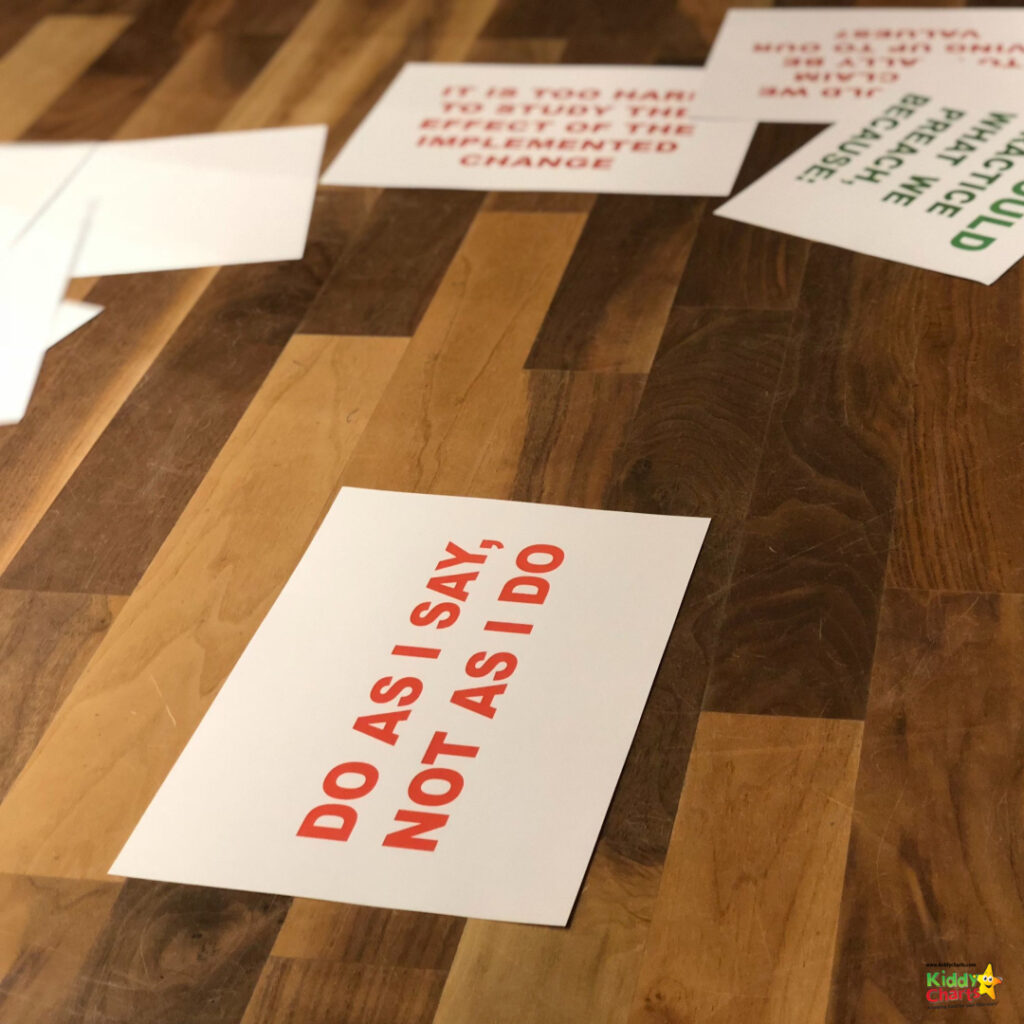

Discuss an emotion at a time
To help children develop a deeper understanding of emotions, you could explore many aspects of one emotion at a time. For example, if you were considering anger, you could think about the physical symptoms of anger, whether it’s enjoyable or unenjoyable, the kind of things that trigger anger (and how this can be different for different people), how being angry can affect your thinking, what anger might make you feel like doing and what might be the best ways of dealing with this emotion. You could create a poster including all the things you talked about.
Emotions that can be interesting to explore this way include feeling: happy, sad, angry, scared, shy, worried, bored, grumpy, excited, jealous, lonely, guilty, disappointed, surprised etc. Such conversations can give you interesting insights into children’s inner worlds!


Use emotions to problem solve
Looking for the emotions behind what a child is saying can be a great way to open up problem-solving conversations. If a child says, ‘I had nobody to play with at lunch time,’ instead of dismissing the child’s concerns, offering advice or organising a playmate immediately, try expressing what you think the child is feeling. For example, ‘You must have felt lonely and left out.’ Commenting in this way gives the child an opportunity to talk about how they felt and what happened so they feel really listened to. This discussion will help them feel better and it might also help them work out what they are going to do about the situation.


Helping children problem solve helps them trust they can sort some things out for themselves and increases their self-reliance. In the long run, this will help a child believe they can cope and this results in them feeling less anxious.
Checklist for talking about emotions with children
In order to help – we have a checklist for you to think about when talking to kids about their feelings. You can download it using the button below, or the image. We have also given you the expanded details in the article below as well:
Here are the items that it is worth thinking about when you help your children to understand those emotions:


- Emotionally check-in: Do a regular emotion check-in with children. Use books or posters to talk about the emotions they experienced that day,
- Mind your language around the emotions: Refer to different emotions as enjoyable or unenjoyable, comfortable or uncomfortable (and never ‘good’ or ‘bad’),
- Expand emotional vocabulary: Increase children’s emotion vocabulary by introducing new emotion words regularly (and possibly adding them to a poster on the wall),
- Role-model your feelings: Help children become used to talking about emotions by role-modelling describing your own day and how you felt at each of the events that happened,
- Accept your child’s feelings: Always accept and validate children’s emotions. Even if they seem exaggerated to you, they are very real for them,
- Show empathy: When you see a child having an emotional response, use ‘I wonder if you’re feeling X because….’ to increase their awareness of emotions and help them feel you care,
- Talk about the body too: Explore the physical symptoms of feeling different emotions. For example, where you feel it in the body, how you speak, what your heartbeat does, the expression on your face etc.,
- Explore triggers: Consider what triggers different emotions and how these triggers can be different for different people i.e. what makes one person angry, doesn’t necessarily make everyone angry,
- Understand the link between emotions and actions: Talk about how emotions affect what we think. What kind of thoughts does the sad, angry, excited, worried etc. brain have?
- Incorporate problem solving: Listen out for what a child might be feeling behind what they are saying to open up conversations that will help them sort out some situations for themselves.
Check out some of our other feelings resources
We hope that you have found this a helpful article – if you have, do check out our weekly newsletter:
You can also see some of the other resources on the site:
Here are some other ideas to help children to understand and cope with their feelings and emotions.
How to help your kids recognise their emotions: Free printable #31DaysOfLearning
A printable to help kids understand what feelings they are having.
Anxiety in kids
Ideas from KiddyCharts to help with kids expressing themselves, and focusing on improving mental health.
Positive writing prompts for kids emotional development #31DaysOfLearning
Writing prompts for children that focus on feelings, and emotional development.
31 Days Of Learning
Find all of our 31 Days of Learning events on one page! Print out our calendar and work your way through each activity! Have fun!
Friendship mindful activity for kids: Friends who lift my spirits most
Simple mindful activities for kids focusing on friends that lift us up.
Alongside the books that Molly has written to support kids:






There are also other ideas from fellow parenting sites too:
More feelings resources from the web
Here are some great resources and activities centered around feelings for children.
This activity from The Chaos and Clutter is a fun Jenga game that helps kids to talk about their emotions.
Meet Lester, helping kids express feelings. Often children find talking about their feelings a little difficult. But Lester is here to help!
Use this simple feelings chart for kids to help your kids learn about emotions. When kids can recognize and name their feelings, they can deal with them.
Thanks for coming to see us again today, and we really hope you will come back and see us again soon.
Helen



